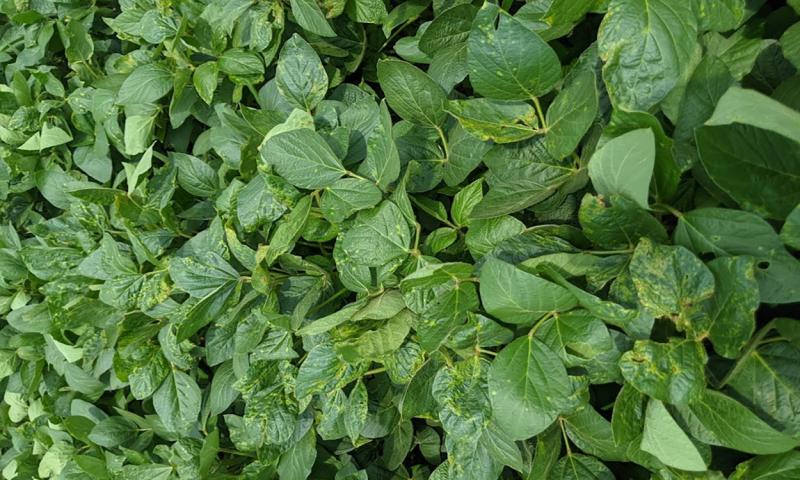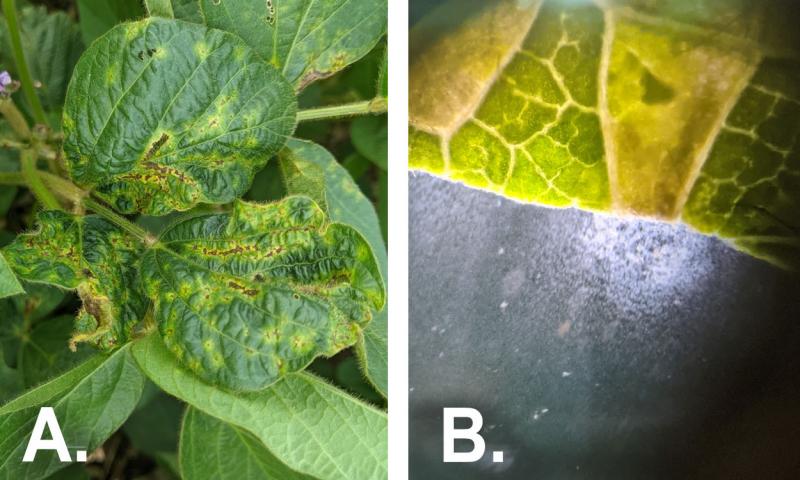
Originally written with contributions by Emmanuel Byamukama, former SDSU Extension Plant Pathologist.
Bacterial blight was found developing in a few soybean fields scouted the week of July 19th. Leaf tattering (tearing) is a common symptom of bacterial blight (Figure 1 and Figure 2). This happens when expanding bacterial blight lesions coalesce and form large brown patches. High wind and heavy raindrops may lead to these lesions tearing apart. Individual bacterial blight lesions start as small, angular spots surrounded by a small, yellow halo with a water-soaking characteristic.
Bacterial blight is caused by a bacterium, Pseudomonas syringae pv. glycinea. This bacterium survives in infested crop debris and on seed; however, the infested soybean residue is the main source of inoculum. The bacteria are splashed onto leaves by wind and rainfall. The bacteria enter the plant through natural openings and wounds. The bacteria multiply when temperatures are less than 81 degrees Fahrenheit.

Highly susceptible varieties can still develop bacterial blight even though we have had warmer temperatures and limited rainfall events. The variety planted in one of the soybean fields scouted in Moody County was found to be highly susceptible to bacterial blight because the other soybean fields scouted in the same area did not have the disease.
Management
Host resistance to this disease is available, therefore for future soybean seasons, varieties with resistance or tolerance to bacterial blight should be selected for planting. In most cases, bacterial blight is a minor disease, causing negligible yield loss in soybeans. Do not apply fungicides to manage bacterial blight, fungicides have no efficacy against bacterial diseases.

